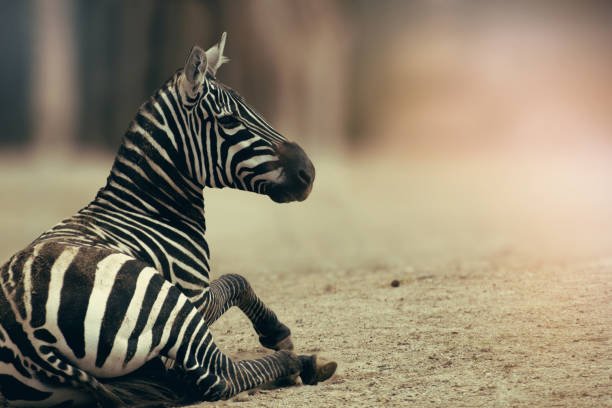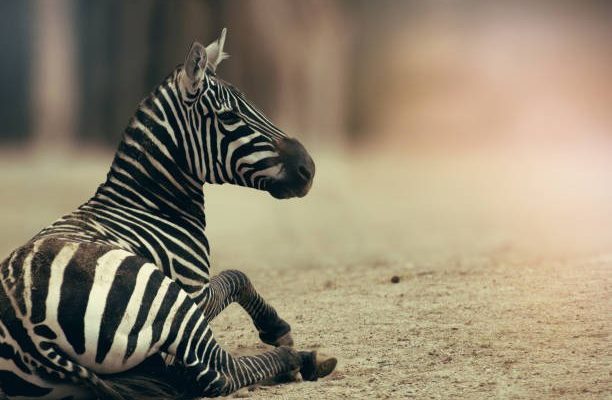
Honestly, it’s easy to get caught up in the charm of zebras without really knowing the facts. To give you a clearer picture, think of zebras as the quirky cousins of horses, living in the savannahs and grasslands of Africa. They have unique behaviors, social structures, and adaptations that distinguish them from other equines. If you’ve ever wondered whether zebras are just a variation of horses or how they actually behave in the wild, you’re in the right place. We’re going to clear the air and separate fact from fiction.
Zebras Are Just Horses in Disguise
You might be surprised to hear that a common misconception is that zebras are just a type of horse. While they share a family (Equidae) and some physical traits, they are actually different species. Zebras belong to the genus Equus, just like horses and donkeys, but they have unique characteristics that set them apart.
For starters, zebras are not domesticated like horses. Their wild nature means they have very different behaviors and social structures. While horses can often be trained and ridden, zebras are known for being quite stubborn and less willing to conform to human expectations. They have evolved to thrive in their environments, making them adept at surviving predators in the wild.
So, while they may look similar at first glance, zebras hold their own in the grand scheme of the animal kingdom. Think of them like those eccentric relatives who refuse to blend in with the crowd—they have their own distinct personality!
Their Stripes Serve No Purpose
You might have heard people say that zebra stripes are merely for looks. Here’s the thing: their stripes actually serve several important purposes! For one, the stripes help zebras confuse predators. When they are in a herd, their stripes can create an optical illusion, making it hard for predators like lions to single out one zebra as a target.
Additionally, stripes have been shown to play a role in regulating body temperature. The light and dark patterns help create air currents along their skin, providing a cooling effect in the hot African sun. Isn’t that fascinating? It’s like nature’s way of giving them a stylish, built-in air conditioning system.
Finally, the stripes also help zebras recognize each other. Just like humans may remember a friend by their unique hair color or style, zebras can identify one another based on the distinct patterns of their stripes. This social aspect is crucial for building strong group dynamics within herds.
Zebras Are Solitary Creatures
You might picture zebras wandering the savannahs alone, but that’s not the case! Zebras are highly social animals and typically live in organized groups called harems. These harems usually consist of one male and several females, along with their young. They rely on each other for protection, grooming, and companionship.
Living in groups offers zebras various advantages. For instance, they can better defend themselves against predators when they work together. With multiple pairs of eyes on the lookout, the chances of spotting a lurking lion increase significantly. Plus, the social bonds they form within their groups help them feel secure and supported in a challenging environment.
Interestingly, they also engage in playful behaviors, often seen chasing each other or engaging in friendly wrestling matches. This playtime is essential for building social ties and keeping their spirits high!
Zebras Only Live in Africa
It’s widely believed that zebras are strictly African animals, and while that’s true to an extent, it’s not the complete picture! There are three main species of zebra: the **plains zebra**, the **Grevy’s zebra**, and the **mountain zebra**, all of which primarily inhabit various regions of Africa. However, you might be surprised to learn that zebras have been introduced to other places as well.
For instance, some zoos and wildlife reserves around the world have zebras to help educate people about African wildlife. Plus, there are conservation efforts in place to protect their populations. These efforts sometimes extend to breeding programs outside Africa to help ensure the survival of the species.
So, while zebras are native to Africa, their presence can be found in other parts of the world, contributing to global awareness and appreciation for these remarkable animals.
Zebras Are Always Black with White Stripes
One popular belief is that zebras are black animals with white stripes. This sounds logical, right? But let me explain: zebras are actually black with white stripes! The truth is, if you look closely at a zebra’s skin underneath its fur, you’ll find that it’s all black.
When zebras are born, they are primarily black, with their white stripes developing as they grow. This feature might seem trivial, but it highlights how nature creates fascinating variations in appearance. You might think of it like customizing a car—a basic color is there, but the stripes make it stand out!
Furthermore, because of the variations in stripe patterns among different species and individuals, no two zebras are alike. They’re like nature’s very own barcode!
Zebras Are Aggressive Animals
A common myth about zebras is that they’re aggressive and dangerous. While they can defend themselves fiercely, especially when protecting their young, they’re not naturally aggressive. Zebras are more likely to flee from danger than confront it.
However, they can become aggressive if provoked or cornered. Just like any wild animal, zebras have a natural instinct to protect themselves. When threatened, they might kick or bite, but this is mostly a defensive mechanism rather than a sign of innate aggression.
In fact, within their social structures, zebras are often quite gentle and nurturing. They take care of each other and even engage in comforting behaviors, such as grooming each other to strengthen bonds. It shows that underneath their tough exterior, they have a caring side too.
Zebras Are Endangered and Have No Future
You might hear that zebras are on the brink of extinction, but the reality is more nuanced. While certain species, like the Grevy’s zebra, face critical threats due to habitat loss and hunting, other species, like the plains zebra, have stable populations. Conservation efforts are underway to protect zebras and their habitats, focusing on habitat preservation, anti-poaching measures, and public education.
Organizations worldwide work tirelessly to ensure a brighter future for these fascinating creatures. By raising awareness and promoting sustainable practices, we can help safeguard zebra populations for years to come. So, while there are certainly challenges ahead, the outlook isn’t entirely bleak.
Zebras are truly remarkable animals, bursting with individuality and charm. From their striking stripes to their social behavior, they challenge many common myths and misconceptions. Understanding zebras helps us appreciate the complexity of nature and the need for conservation efforts to protect these unique creatures.
So, the next time you see a zebra, remember it’s not just a horse with stripes; it’s a symbol of resilience and beauty. By debunking these myths, we can foster a deeper respect for zebras and the wild. Keep curious and keep learning—there’s a whole world of fascinating animals out there waiting for you to discover!

